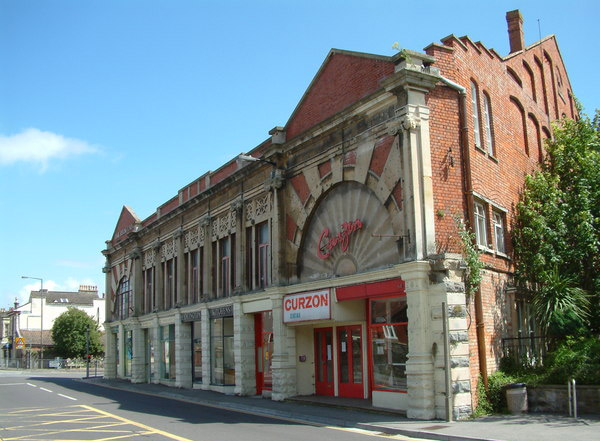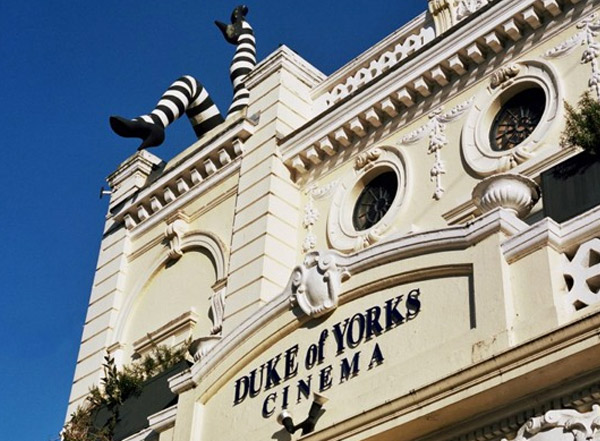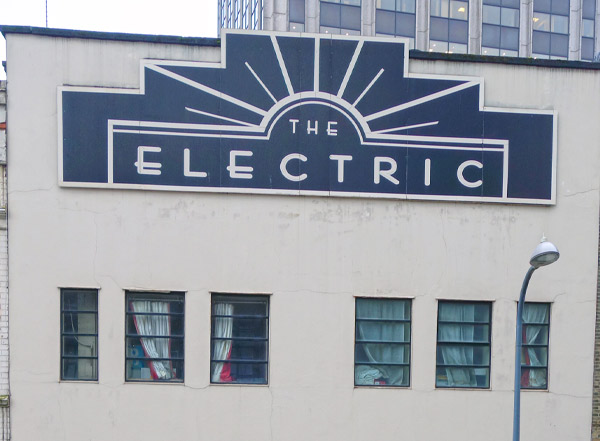
Cottage Road Cinema
Leeds
Previously known as Headlingley Picture House, opened in 1912. In recent years it has undergone renovations to the cinema entrance, revealing the original stone archway, with its decorative plasterwork and so restoring the facade to its original glory.

Now called Phoenix, is an independent cinema owned and run by a charitable trust on behalf of the people of North London. It first opened in 1929, a historic building with Edwardian and art deco features listed Grade II. It was one of the first cinemas in London to introduce sound films in 1929 when it was known as the “Coliseum”.

The Electric Cinema
Portobello Road, London
A Grade II listed building, it opened on 24th February 1910 and is now London’s oldest and one of its finest purpose-built cinemas although the original exterior has been altered to a large extent. The foyer retains its tiny gilt-domed box office and mosaic floor which leads to a baroque panelled auditorium with fine plasterwork.

Built in 1908 as a hotel in Leeds, it was converted to a cinema in 1914. Many of its original features are still in evidence today, from the decorated balcony, to the gas lighting, and organ at the front of the auditorium.

Originally built in 1910, The Palace is one of the oldest purpose built cinemas still operating in Britain. Today the cinema has two screens with 170 and 101 seats.

The Ritzy
London
The Electric Pavilion in Brixton, now known as The Ritzy, opened on 11 March 1911. It still retains the architecture and atmosphere of an Edwardian cinema and now runs as an arts cinema.

The Curzon Community Cinema
Clevedon, Somerset,
Opened in 1912, it was saved from closure in 1996 and is now community owned and run. It claims to be the oldest continually running cinema in the world.

The Dome
Worthing
Originally known as The Kursaal, the Dome, Worthing, is a unique example of an Edwardian Leisure Centre It was built in 1910 and a year later the cinema, known as the Electric Theatre opened as part of the Kursaal complex. After the local council bought it for eventual demolition a lengthy and difficult campaign followed to save it. After steering a course through a ‘minefield’ of problems the Dome finally won a Lottery Grant and now runs as a cinema with two screens and a Function Room for weddings and conferences.

The Duke of York’s
Brighton
Opened in Brighton in September 1910, is one of the oldest operating cinema in Britain. Its imposing façade was built on to part of the malthouse of Longhurst’s Brewery. It is now part of the Picture House group of cinemas and has a a pair of stripey legs sticking out of the top of the building.

The Electric Cinema
Birmingham
Opened on 27th of December 1909 and claims to be the oldest working cinema in the UK. However there’s not a great deal left of the original building due to a rebuild in 1937.

An independent, family owned and run picturehouse in the heart of the English Lake District, it has entertained audiences continuously since 1914. Retaining many of its Edwardian features – beautiful gold radiators, pressed-tin wall panelling, and tip-up ushers’ seats – the venue has been lovingly renovated, with a small second screen tucked under the balcony of the traditional 175-seater main auditorium.

The Ultimate Picture Palace
Oxford,
Opened on 25th February 1911 but closed in 1920. The cinema remained closed, with the building eventually becoming derelict. In the 1970s, it was taken over and restored by entrepreneur-turned radio presenter Bill Heine, who reopened the cinema as the Penultimate Picture Palace in 1976. It was closed again between 1994 and 1997.
HERITAGE
International Moving Image Society supports those working with moving images in any media. The aims of the BKSTS is to encourage, sustain, educate, train and represent all those who, creatively or technologically, are involved – creatively or technologically – in the business of providing moving images and associated crafts in any form and through any media.
Cinema Treasures
This is a useful web site as it often provides more detail about the history of early cinemas than the current web sites of those cinemas. Cinema Treasures is a website devoted to cinema preservation and awareness. Utilizing the community-building capabilities of the Internet, Cinema Treasures unites cinema owners and enthusiasts in a common cause, to save historic cinemas.
English Heritage is the body responsible for historic buildings in the UK, which granted the Electric Palace Grade II* listed status for a building of historical importance.
The Bill Douglas Centre for the History of Cinema and Popular Culture based at the University of Exeter, has displays on the history of cinema and its precursors – zoetropes, magic lanterns, panoramas and shadow puppets
The Cinema Theatre Association was started in 1967 by journalist Eric George, who wished to see more attention paid to the magnificent movie palaces of the Twenties and Thirties. Since then, the Association has widened its horizons to encompass the study of all cinema buildings. Wherever possible, the Association campaigns for the preservation and continued use of cinemas and theatres for their original purpose.
The Harwich Society is an amenity society that seeks to protect, conserve and preserve the green and built heritage which remains a rich resource on the Harwich Peninsula. It takes special interest in historic buildings, transport, new roads, pollution, open spaces and footpaths. It publishes local history booklets, has regular meetings and social activities, arranges historic walks and can speak to your organisation on many aspects of Harwich’s heritage.
The Projected Picture Trust is run by a group of enthusiasts to who enjoy and collect old cinema equipment. Its historical collection can be seen at Bletchley Park.
The Riverside Theatre in Woodbridge, Suffolk.
An independent cinema which works in collaboration with the Electric Palace and The Regal, Stowmarket to book mainstream films.
FILM INFORMATION
British Film Institute
The BFI encourages the development of the arts of film, television and the moving image throughout the United Kingdom. It promotes access to and appreciation of the widest possible range of British and world cinema and has established and looks after film collections reflecting the moving image history and heritage of the United Kingdom. The BFI operates BFI Southbank (formerly the National Film Theatre) is the leading repertory cinema in the UK specialising in seasons of classic, independent and non-English language films.
British Board of Film Classification
Link to the BBFC webpages for parents about film classification. The BBFC also has two websites designed and maintained by its education team.
CBBFC is a website aimed at children aged seven and over, it includes games and activities for use in the classroom and at home, an opportunity to rate and review films and information for parents and teachers.
